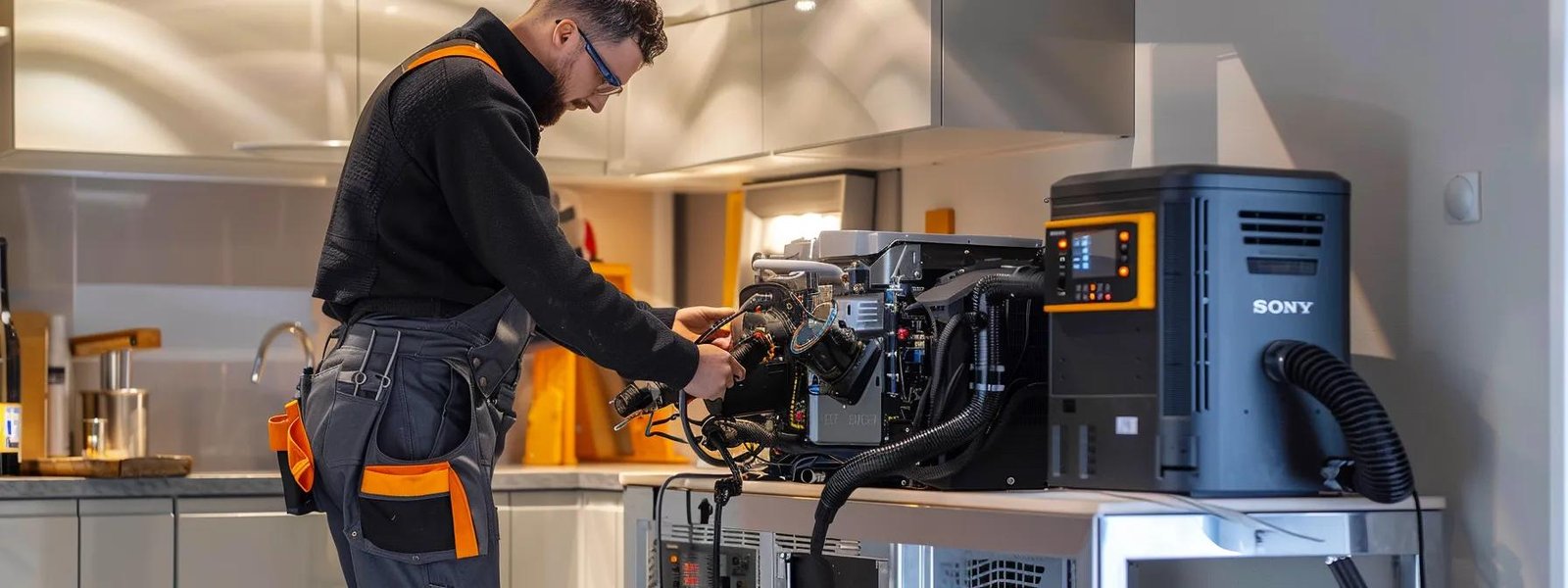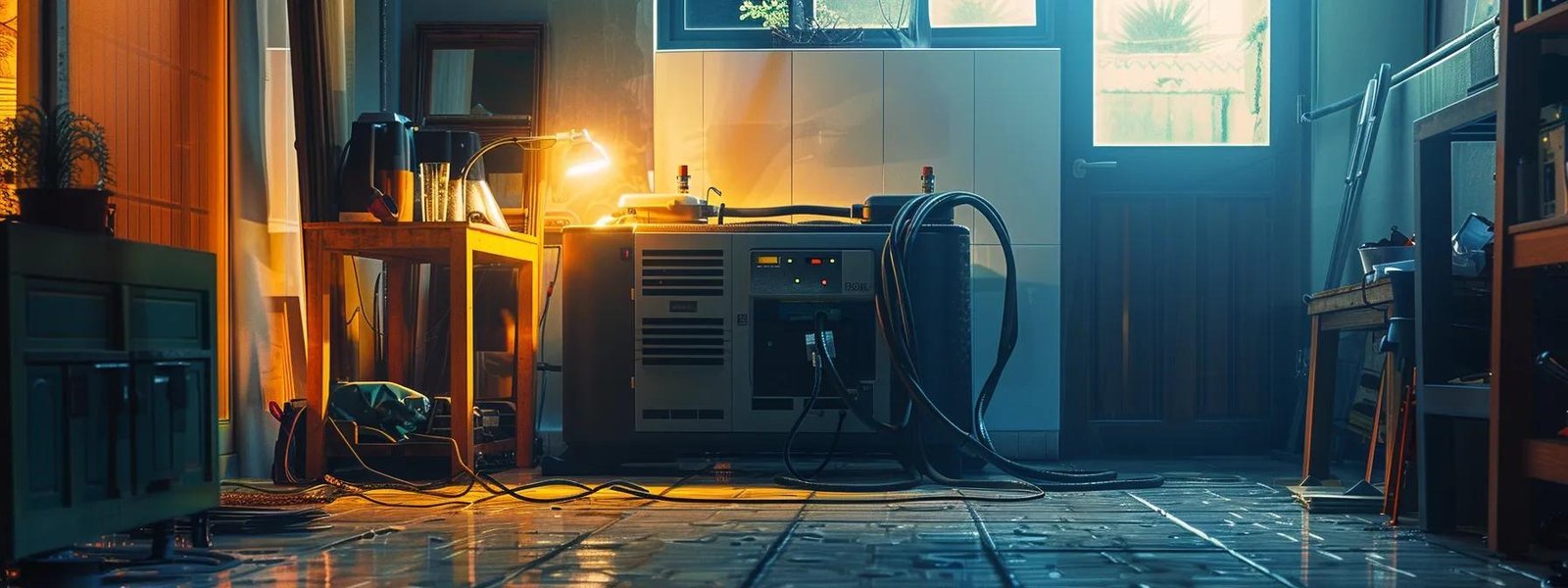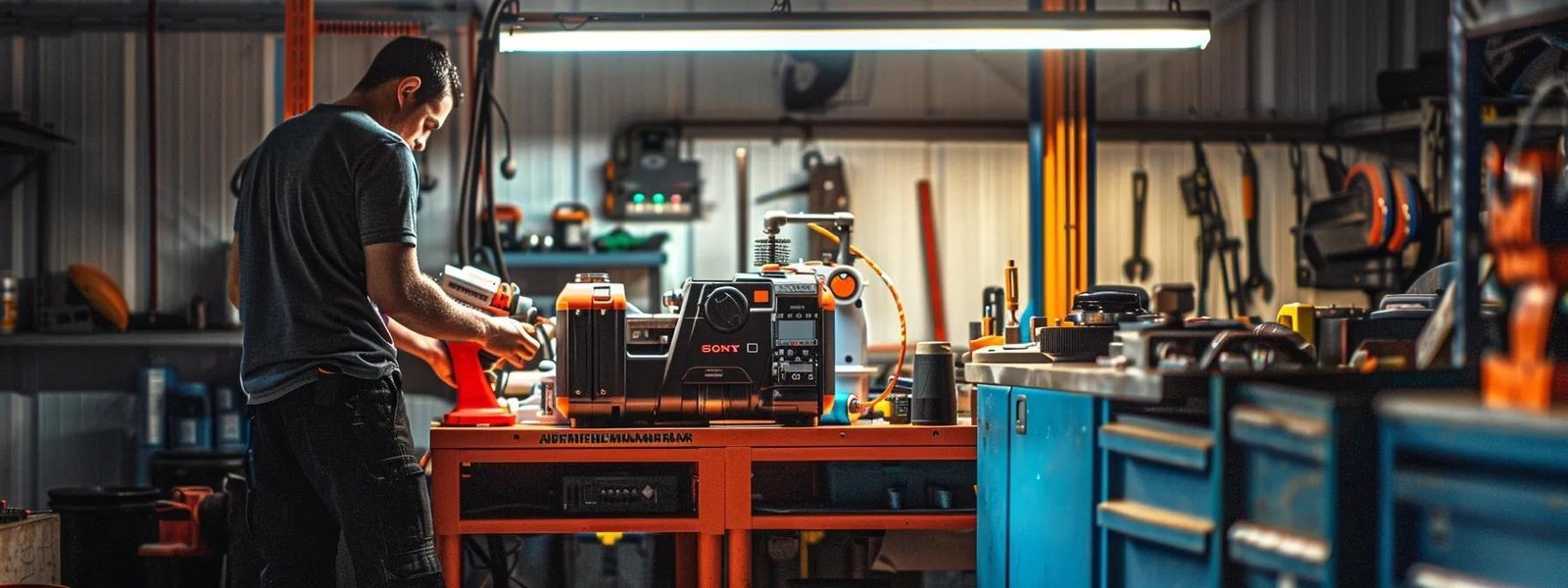
When the power goes out, how prepared is your home? Many homeowners face the challenge of keeping their homes powered during outages. This comprehensive guide to home generator installation steps will walk you through essential topics, including planning your installation and connecting the electrical components. By following these steps, you will gain the knowledge needed to choose the right engine, whether it’s a diesel generator or a propane option, and ensure a reliable power source. This guide will help you avoid common pitfalls and ensure your home stays protected and efficient.

Home generators come in various types, including portable and standby models, each designed to meet specific needs during an emergency. Installing a home generator offers numerous advantages, such as ensuring continuous power supply and protecting electrical wiring from surges. Understanding these options and their benefits, including considerations like diesel fuel usage, electrical diagnostics, and warranty details, is essential for homeowners looking to enhance their preparedness. This section will explore the types of generators available and the advantages of having one installed.
Home generators are primarily categorized into two types: portable generators and standby generators. Portable generators are versatile and can be moved to different locations, making them ideal for temporary power needs during home improvement projects or emergencies. In contrast, standby generators are permanently installed and automatically provide power during outages, ensuring that essential appliances remain operational without the risk of carbon monoxide hazards associated with improper ventilation. Understanding these options helps homeowners make informed decisions about which generator best suits their needs, particularly regarding fuel types like oil and the safety features necessary for their homes.
Installing a home generator provides homeowners with a reliable power source during outages, ensuring that essential systems remain operational. This is particularly beneficial in construction scenarios where power is critical for tools and equipment. Additionally, generators that utilize natural gas can offer a more efficient and environmentally friendly option, while a proper installation involving an electrical cable and transfer switch enhances safety and convenience. Using gravel as a base for the generator can also improve drainage and stability, further protecting the investment.

Assessing household power needs is the first step in planning a generator installation. Homeowners must determine the frequency of power outages and identify essential appliances, such as sump pumps, that require backup power. Choosing the appropriate generator size ensures adequate support while adhering to local building codes. Additionally, obtaining necessary permits and permissions is crucial to mitigate risks, including carbon monoxide hazards.
Assessing household power needs is a critical step in planning a generator installation. Homeowners should identify essential appliances that require backup power, such as refrigerators, sump pumps, and heating systems, to ensure a reliable power supply during outages. Additionally, understanding the fuel tank capacity and maintenance requirements, including checking the spark plug, can enhance the generator’s efficiency and safety, ultimately protecting the home from potential electrical hazards.
Choosing the appropriate generator size is crucial for ensuring that a home remains powered during a power outage. Homeowners should consider the total wattage of essential appliances, such as refrigerators and sump pumps, to determine the generator’s capacity. An electrician can assist with this inspection, ensuring that the selected generator meets the household’s needs while also considering factors like flood risks and the durability of materials, such as stainless steel, for outdoor installations.
Obtaining the necessary permits and permissions is a vital step in the generator installation process. Homeowners must check local regulations to ensure compliance, as failure to do so can lead to issues such as carbon monoxide poisoning from improper installation. For instance, if a Cummins generator is being installed, specific guidelines regarding fuel types, including gasoline, may apply. Engaging with local authorities not only helps in troubleshooting potential installation problems but also ensures that the generator operates safely and efficiently, providing peace of mind during power outages.

Preparing the installation site for a home generator involves several key steps. First, selecting the ideal location ensures proximity to the gas meter and circuit breaker while allowing for proper ventilation. Next, ensuring accessibility for maintenance is crucial. Finally, setting up a stable foundation, such as a concrete pad, provides the necessary support for models like Generac, enhancing safety and efficiency.
Selecting the ideal location for a home generator is crucial for ensuring safety and efficiency. Homeowners should consider factors such as fire safety, noise levels, and proximity to carbon monoxide sources, like exhaust vents. Additionally, placing the generator near the gas pipeline and ensuring it is away from air conditioning units can enhance performance and reduce potential hazards.
Ensuring proper ventilation and accessibility for a home generator is essential for safe and efficient operation. Generators require adequate airflow to prevent overheating, especially when powering essential appliances like pumps and maintaining electric power during outages. Homeowners should position the generator away from walls and other obstructions, allowing for sufficient space around the unit to facilitate maintenance and ensure that exhaust fumes are safely dispersed, thus protecting the electrical grid from potential hazards.
Setting up a stable foundation or platform for a home generator is essential for ensuring its safe and efficient operation. A solid base, such as a concrete pad, provides the necessary support for the generator and helps prevent issues related to vibrations and shifting. Proper installation also involves securing the generator with a contract that outlines the responsibilities of the installer, ensuring that components like the alternator and radiator are correctly positioned to facilitate airflow and cooling, which is crucial for optimal performance during generator installation.

Positioning and securing the generator safely is crucial for optimal performance and safety. This section will cover connecting the generator to the appropriate fuel source, whether gasoline, propane, or natural gas. Additionally, implementing safety measures for fuel connections will be discussed to ensure a secure and efficient installation. These steps are essential for a reliable home generator setup.
Positioning and securing the generator safely is essential for optimal performance and safety. Homeowners should place the generator on a stable, level surface, ensuring it is away from windows and doors to prevent carbon monoxide from entering the home. Additionally, securing the generator with appropriate anchors can help prevent movement during high winds or storms, ensuring reliable operation when it is needed most:
Connecting the generator to the appropriate fuel source, whether gasoline, propane, or natural gas, is a critical step in the installation process. Homeowners should ensure that all connections are secure and comply with local regulations to prevent leaks and ensure safe operation. For instance, using the correct fittings and hoses for propane or natural gas can enhance efficiency and reduce the risk of hazards, providing peace of mind during power outages.
Implementing safety measures for fuel connections is essential to ensure the safe operation of a home generator. Homeowners should use high-quality fittings and hoses that comply with local regulations to prevent leaks and potential hazards. Regular inspections of these connections can help identify any wear or damage, allowing for timely repairs and maintaining the generator’s efficiency and safety during power outages.

Connecting the electrical components of a home generator is a critical step in ensuring reliable power during outages. This section will cover the importance of installing the transfer switch correctly, wiring the generator to the home electrical system, and testing electrical connections for reliability. Each of these steps is essential for a safe and efficient generator setup, providing homeowners with peace of mind during power interruptions.
Installing the transfer switch correctly is a vital step in connecting the electrical components of a home generator. This switch allows homeowners to safely transfer power from the generator to the home’s electrical system during an outage, preventing backfeed that can damage appliances and pose safety risks. It is essential to follow local electrical codes and guidelines during installation to ensure compliance and safety:
Wiring the generator to the home electrical system is a critical step that ensures reliable power during outages. Homeowners should connect the generator to the main electrical panel using a transfer switch, which allows for safe and efficient power transfer. It is essential to follow local electrical codes and guidelines during this process to prevent hazards and ensure that the generator operates effectively, providing peace of mind when power interruptions occur.
Testing electrical connections for reliability is a crucial step in the home generator installation process. Homeowners should ensure that all wiring is secure and properly insulated to prevent any electrical hazards. Regular testing of connections not only confirms that the generator will operate effectively during power outages but also helps identify potential issues before they become serious problems, ensuring peace of mind and safety for the household.

Testing and maintaining a home generator is essential for ensuring reliable performance during power outages. This section will cover performing initial startup and operational tests to confirm functionality, establishing a routine maintenance schedule to prolong the generator’s lifespan, and troubleshooting common generator issues to address potential problems promptly. These practices are vital for homeowners to ensure their generator operates efficiently when needed.
Performing initial startup and operational tests on a home generator is crucial to ensure it functions correctly when needed. Homeowners should follow the manufacturer’s guidelines to start the generator, checking for any unusual noises or vibrations that may indicate issues. Regular testing not only confirms the generator’s readiness but also helps identify potential problems early, ensuring reliable performance during power outages.
Establishing a routine maintenance schedule for a home generator is essential for ensuring its reliability and longevity. Homeowners should plan regular inspections, including checking fuel levels, changing oil, and testing the battery, to keep the generator in optimal condition. By adhering to a maintenance schedule, homeowners can prevent unexpected failures during power outages, ensuring that their generator operates efficiently when it is needed most.
Troubleshooting common generator issues is essential for maintaining reliable performance during power outages. Homeowners may encounter problems such as the generator not starting, which can often be traced back to fuel supply issues or dead batteries. Regularly checking fuel levels, inspecting battery connections, and ensuring that the generator is properly maintained can help prevent these issues and ensure that the generator operates efficiently when needed.
Understanding the steps for home generator installation is crucial for ensuring reliable power during outages. Homeowners must assess their power needs, choose the right generator size, and secure necessary permits to enhance safety and compliance. Proper installation, including positioning, fuel connections, and electrical components, guarantees optimal performance and efficiency. By following these guidelines, homeowners can protect their homes and maintain essential functions during emergencies, making generator installation a valuable investment.


